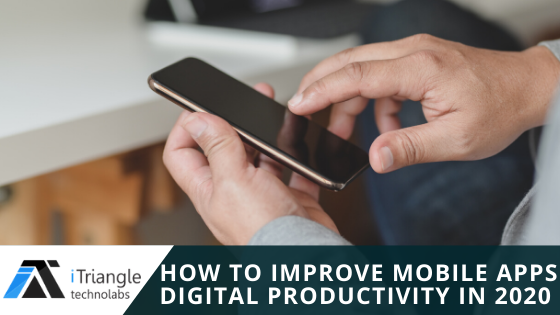
Mobile is a real interaction device for business, whether it’s B2E, B2C, or B2B platform. Business logic is written in micro service and high-value services such as cognitive and analytics are available as omnichannel REST APIs. Mobile apps are built to fit into this channel-agnostic delivery pattern. So, develop, deploy and manage scalable apps for mobile devices. The mobile channel has its own particular challenges. For that Mobile services placing fewer demands on the mobile app development team so that it can focus on the most important aspect : the app experience.
Mobile deployment architectures have supported a multichannel strategy and also incorporate AI and AR capabilities for innovative use cases. Developers focus on writing code to build the best user experience, while learning on tools and architectures to assemble necessary services to deliver such capabilities. This new mobile architecture delivers support for creating apps at scale, and then builds on the core principles of micro services, and innovation using Mobile and Watson services.
Table of Contents
Extend mobile application capabilities
When you build an app, you can enable the continuous delivery of innovations if you expand the app capacities with cloud-based mobile services. Push notifications, mobile analytics, mobile device tracking, and secure back-end availability quicken an opportunity to-esteem.
Mobile services typically provide these capabilities:
- Pure Native Comprehensive security: Protection from mobile-specific threats
- Feature roll-outs: Controlled releases without app redeployment
- A/B testing: Measurable user behavior testing
- Application life cycle management: Incremental updates and version management
- Push notifications: Boosting user engagement
- Offline data sync: Data sync for offline use cases
- Build and test: Multi-platform device farm automated testing
- Mobile analytics: Better understanding of user behavior
- Crash and in-app reporting: Debugging problems faster
Choosing the right technology to build your mobile apps
Choosing the technology to build your mobile apps is difficult. A continuum of technologies are available and different factors determine the platform of choice. The range is as per the following.
Web Apps
used by any browser on any system and is essentially a highly interactive, fluid and responsive website enhanced for smartphone use. Must be associated with the web consistently to work.
Native Apps
One system or platform, such as Apple (iOS) or Android devices. They are downloaded directly to the handset and approach native phone features like an accelerometer or the file system. You do not need internet access to utilize the application once the app has been downloaded.
Hybrid Apps
Hybrid apps are built utilizing web advancements in a wrapper framework like React Native. They would then be able to be exported as native applications on any platform.They behave similar to native apps and don’t always require the internet to run.
Progressive Web Apps (PWA)
PWA’s or Progressive Web Apps combine elements from both web and native apps, allowing clients to download the web app to their phone and have limited access to native phone features. As long as the app takes advantage of certain features you do not need the internet to collaborate with these apps.
Your decision is primarily guided by the responsiveness, team skills, technology ecosystem vibrancy, and time to advertise.
Ongoing maintenance
Once your SaaS application is live, you’ll have to ensure you have an in-house team to help it if it goes down. You’ll likewise require them to build features because in this fast-paced world, as you gain users with various necessities you’ll need to monitor and cater to those requirements.
Your SaaS application can’t stay stagnant. Users expect new features and they hope to be heard so building a product is a huge investment in both time and resources.In case you’re not looking to build out an in-house team to maintain the product, ensure your agency is offering the maintenance to keep the money flowing and your users happiness.
Taking mobile apps to the next level
After you build a basic app with continuous integration and testing, add high-value APIs to improve the client experience. With cognitive, Internet of Things (IoT), and data analytics services, your mobile app can deliver a powerful interactive experience.
Now that you understand the ideas of mobile app development, learn more about the process for how to design mobile apps in the Mobile reference architecture. After you understand the architecture, get a starter kit for your mobile app development.



